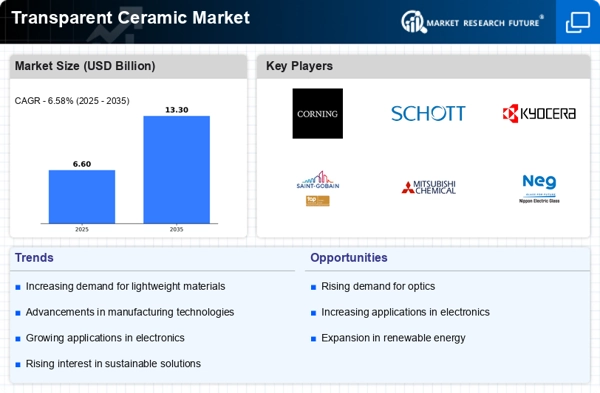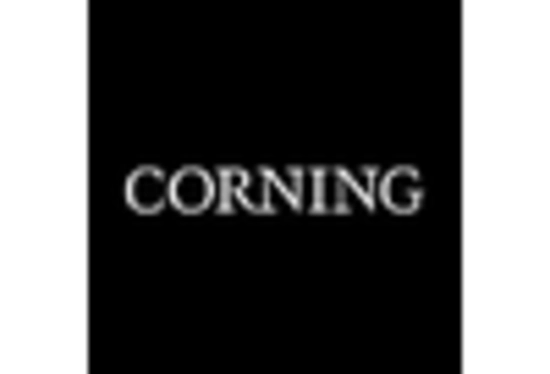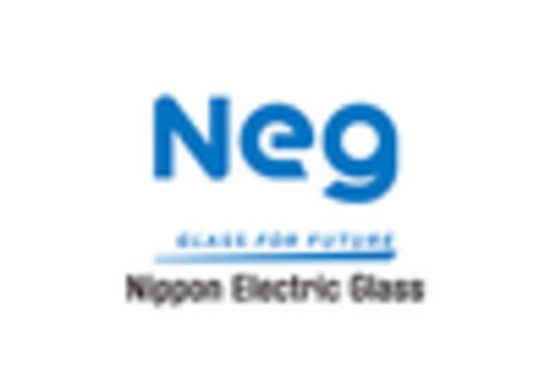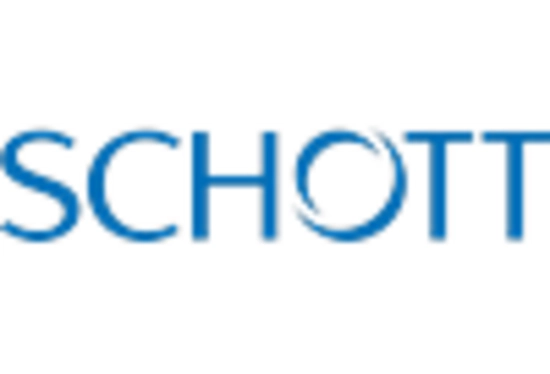Expansion in Medical Applications
The Transparent Ceramic Market is experiencing expansion due to its increasing applications in the medical field. Transparent ceramics are being utilized in various medical devices, including dental applications, surgical instruments, and imaging technologies. Their biocompatibility and optical clarity make them ideal for use in implants and prosthetics, enhancing patient outcomes. The market for transparent ceramics in healthcare is projected to grow at a compound annual growth rate of approximately 7% over the next five years, driven by advancements in medical technology and an aging population. As healthcare providers seek innovative solutions to improve patient care, the Transparent Ceramic Market is likely to see increased demand for its products, fostering growth and innovation in medical applications.
Growing Focus on Energy Efficiency
The Transparent Ceramic Market is increasingly aligned with the global focus on energy efficiency and sustainability. Transparent ceramics are being recognized for their potential to enhance energy performance in architectural applications, such as windows and facades. These materials can provide superior thermal insulation while allowing natural light to penetrate, reducing the need for artificial lighting and heating. The market for transparent ceramics in construction is anticipated to grow as building codes and regulations become more stringent regarding energy efficiency. This trend is further supported by consumer awareness and demand for sustainable building materials. As the construction industry evolves, the Transparent Ceramic Market is likely to capitalize on this shift, promoting products that contribute to energy savings and environmental sustainability.
Rising Demand in Consumer Electronics
The Transparent Ceramic Market is witnessing a rise in demand driven by the consumer electronics sector. With the increasing trend towards sleek and modern designs, manufacturers are seeking materials that offer both aesthetic appeal and durability. Transparent ceramics are being integrated into smartphones, tablets, and wearable devices, providing enhanced scratch resistance and optical clarity. The market for transparent ceramics in consumer electronics is expected to grow at a rate of around 6% annually, reflecting the industry's shift towards high-performance materials. This trend is further supported by consumer preferences for devices that combine functionality with visual appeal. As technology continues to evolve, the Transparent Ceramic Market is poised to benefit from the ongoing innovations in consumer electronics, potentially leading to new applications and market opportunities.
Technological Innovations in Material Science
The Transparent Ceramic Market is significantly influenced by ongoing technological innovations in material science. Recent advancements in fabrication techniques, such as additive manufacturing and sintering processes, have enhanced the production capabilities of transparent ceramics. These innovations allow for the creation of complex shapes and sizes, which were previously challenging to achieve. The market is projected to expand as manufacturers adopt these new technologies, leading to improved product performance and reduced production costs. Furthermore, the development of new composite materials that incorporate transparent ceramics is likely to open new avenues for application across various industries. As these technologies mature, the Transparent Ceramic Market may experience a transformative shift, fostering growth and diversification in product offerings.
Increasing Applications in Defense and Aerospace
The Transparent Ceramic Market is experiencing a notable surge in demand due to its increasing applications in defense and aerospace sectors. Transparent ceramics, known for their high strength and optical clarity, are being utilized in various military applications, including transparent armor and sensor windows. The market for transparent ceramics in defense is projected to grow at a compound annual growth rate of approximately 8% over the next five years. This growth is driven by the need for advanced materials that can withstand extreme conditions while providing visibility. Furthermore, the aerospace industry is adopting transparent ceramics for cockpit displays and protective covers, enhancing safety and performance. As these sectors continue to innovate, the Transparent Ceramic Market is likely to expand significantly, driven by technological advancements and the demand for high-performance materials.


















Leave a Comment